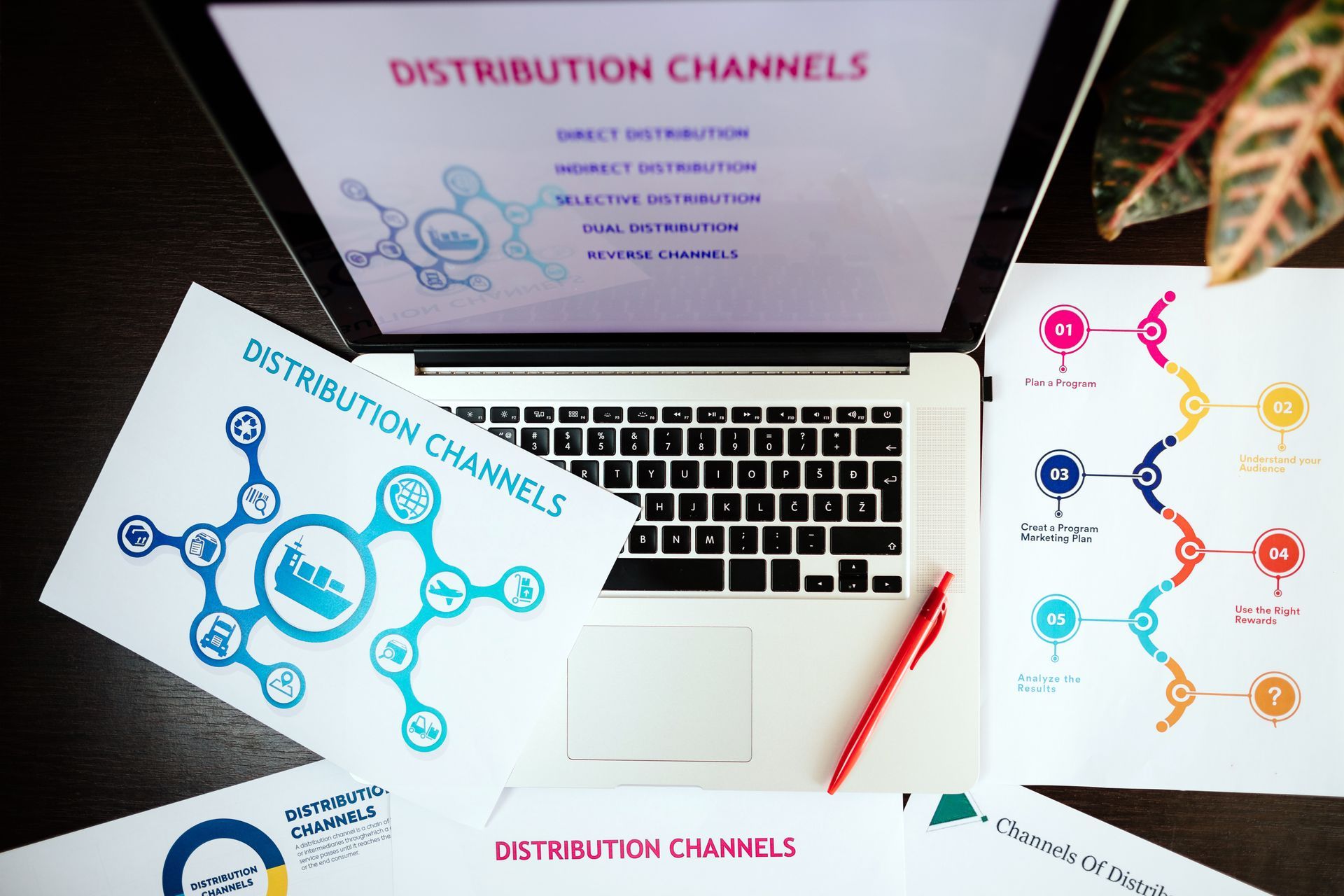From Data Silos to AI Intelligence: Why Businesses Choose LayerFive
This is a subtitle for your new post

Your AI is only as smart as the data feeding it—Are data silos starving your AI’s growth? The power of Artificial Intelligence relies on the quality and depth of data it uses. But, many companies face the problem of scattered customer data. This makes it hard for them to use Agentic AI to its fullest.
At LayerFive, we know how important it is to solve these issues. That's why we give businesses our top-notch Customer Data Platform. It brings together different data sources, improves data quality, and helps make better decisions.
Key Takeaways
- Unified customer data is key for AI success.
- LayerFive's Customer Data Platform helps break down data silos.
- Quality data is vital for AI's full power.
- Businesses can make smarter choices with all data together.
- LayerFive helps marketers get accurate, privacy-safe data insights.
The Hidden Cost of Fragmented Business Data
Data silos quietly harm business efficiency and innovation. When data is spread across different departments and systems, it causes many problems. These issues hurt the bottom line.
Your AI is Only as Smart as Your Data
Artificial Intelligence (AI) needs top-notch data to give accurate insights. Fragmented data makes AI less effective, leading to bad decisions. For example:
- Inaccurate customer profiles because of missing data
- Can't track customer journeys across different touchpoints
- Lack of a single view of customer behavior
How Data Silos Starve AI's Growth
Data silos limit AI's growth by blocking access to full data. This leads to:
- Lower AI performance because of missing data
- Wrong insights that can lead to bad business plans
- Higher costs for fixing and cleaning data
By uniting data and improving data management, businesses can unlock AI's full power. This leads to better customer insights and smarter decisions.
The Anatomy of Data Silos in Modern Organizations
Modern organizations struggle with data silos, which hinder their ability to make data-driven decisions. Data silos are when data is locked away in certain departments or systems. This makes it hard for other parts of the organization to access it.
Common Causes of Disconnected Information Systems
Several things lead to data silos. Legacy systems that are old or don't work with new tech can cause data to be isolated. Also, departmental segregation means data stays in one team, making it hard for others to work together. Without data integration strategies, organizations struggle to manage data as a whole.
- Incompatible legacy systems
- Departmental segregation
- Lack of data integration strategies
The Ripple Effect: How Silos Impact Decision-Making
Data silos greatly affect how organizations make decisions. When data is split, getting a unified customer view is hard. This makes AI-driven predictions and customer data platform use less effective. Businesses might make wrong choices, hurting their profits and market position.
Agentic AI, Customer Data Platform, and Customer Data: The Powerful Trio
The mix of Agentic AI, Customer Data Platforms, and detailed customer data is changing how companies make decisions. This trio helps businesses make smart, data-based choices that lead to success.
At the center of this trio is Agentic AI, a tech that's reshaping business operations. But what is Agentic AI, and how does it help in business?
Defining Agentic AI and Its Business Applications
Agentic AI means artificial intelligence that can act on its own for users or businesses. These AI agents can do tasks, make choices, and interact with their world without humans. In business, Agentic AI is used for:
- Automating customer service chats
- Forecasting customer actions with predictive analytics
- Adjusting marketing campaigns instantly
- Enhancing supply chain management with predictive upkeep
Experts say, "Agentic AI can change businesses by making them more efficient and effective."
"The future of business is in using AI agents that can act for us, making choices and actions that boost success." - AI Industry Expert
Why Customer Data Platforms Are Essential for AI Success
A Customer Data Platform (CDP) is key for Agentic AI success. A CDP gives a single view of customers by gathering and merging data from different places. This detailed data helps train AI, making it better at predicting and deciding.
The value of a CDP is in its ability to offer high-quality, contextual data vital for Agentic AI. With a CDP, companies can make sure their AI has the data it needs to work well.
By combining Agentic AI with a strong Customer Data Platform and rich customer data, businesses can reach new heights of intelligence and growth.
The Data Hunger of Intelligent Systems
The success of AI depends on more than just data volume. It's about the data's quality and relevance. Intelligent systems need high-quality, relevant data to work well.
Why More Data Isn't Always Better
More data might seem good, but it's not always true. Irrelevant or low-quality data can harm AI systems. This leads to wrong insights and bad decisions. We should use data processing techniques to focus on what's important.
In machine learning, data quality is key to model accuracy. So, we should value quality over quantity.
Quality vs. Quantity: The Data Richness Factor
Data richness comes from its relevance, accuracy, and context. Customer insights from good data help businesses make smart choices. This drives growth. We need to focus on customer insights that really understand what customers want.
By focusing on data quality and richness, we can unlock AI's full power. This leads to real business success.
Context: The Missing Ingredient in Most AI Implementations
In the world of AI, context is often overlooked but key. It's what makes AI systems truly effective. Without it, even the most advanced AI can't reach its full promise.
Contextual Intelligence Defined
Contextual intelligence lets AI systems understand customer interactions deeply. It analyzes customer data from all touchpoints. This way, businesses can tailor their marketing and improve customer service.
Identity Resolution as the Foundation of Context
Identity resolution is vital for AI context. It links different data points to one customer identity. This gives a complete view of the customer, helping businesses make better decisions.
Connecting Customer Touchpoints Meaningfully
To make AI truly contextual, businesses must link customer touchpoints well. They need to combine data from social media, customer service, and purchases. This creates a detailed customer profile, leading to more personalized experiences.
Marketing's Data Challenge: Complexity in the Digital Age
In today's digital world, marketers face a big challenge. They must manage many marketing channels and touchpoints. The huge amount of data from these sources makes it hard to get customer insights and make smart choices.
As we move through this digital world, old ways of handling data don't work anymore. We need better data management tools now.
The Explosion of Marketing Channels and Touchpoints
The digital age has brought many new marketing channels and touchpoints. These include social media, email, mobile apps, and IoT devices. Each one creates a lot of data, making it tough for marketers to manage and analyze it well. For example, a customer might interact with a brand on many platforms, making it hard to see their whole behavior.
To tackle this issue, marketers must use a more unified data management approach. This approach needs to handle the complexity and size of today's marketing data.
Why Traditional CRMs Fall Short for AI-Driven Marketing
Old Customer Relationship Management (CRM) systems can't keep up with artificial intelligence (AI) in marketing. They often use isolated data and can't easily add new data sources or change with customer behavior. This limits their ability to show a full picture of the customer, making it hard to create personalized, AI-driven marketing campaigns.
To really use AI in marketing, we need a more advanced system. It should be able to combine data from different places, give real-time customer insights, and support complex decisions.
Introducing LayerFive: The Next Generation Customer Data Platform
We're excited to introduce LayerFive, a game-changing customer data platform for the AI era. It's designed for businesses using AI to get better customer insights and personalized experiences.
LayerFive's approach to managing customer data is innovative. It has a strong architecture and advanced features. Some key features include:
- Unified Data Collection: It gathers data from different touchpoints to give a full customer view.
- Real-time Processing: It lets businesses respond to customer interactions right away.
- Advanced Analytics: It offers insights that help make strategic decisions.
Core Architecture and Capabilities
LayerFive's architecture is built to handle today's complex customer data. It has several key capabilities:
- Scalability: It grows with your business, handling more customer data.
- Flexibility: It integrates easily with existing systems and tools, ensuring smooth data flow.
- Security: It has strong security to protect customer data and meet regulatory standards.
How LayerFive Differs from Traditional CDPs
LayerFive stands out from traditional CDPs with its AI-driven approach and focus on real-time insights. Unlike other CDPs, LayerFive:
- Leverages AI for Predictive Analytics: It predicts customer behavior and preferences.
- Provides Real-time Identity Resolution: It ensures accurate and current customer profiles.
- Enhances Data Quality: It uses advanced data processing and validation.
By choosing LayerFive, businesses can fully use their customer data. This drives growth and improves customer experiences.
Breaking Down Data Silos with LayerFive
LayerFive helps companies bring together data from different places. This breaks down data silos that slow down business growth. Data silos happen when different parts of a company keep their data separate. This makes it hard to share or use the data together.
Unified Data Collection Across Touchpoints
LayerFive's setup makes it easy to collect data from many sources. It works with:
- Web and mobile apps
- CRM systems
- Social media
- IoT devices
This way, LayerFive gives a full picture of how customers interact. It helps businesses make smart choices.
"The ability to unify data from disparate sources is a game-changer for businesses looking to leverage AI and advanced analytics."
Real-time Integration and Processing Capabilities
LayerFive doesn't just collect data; it also processes it right away. This means businesses always have the latest info. The real-time integration feature lets them:
- Get quick insights into customer behavior
- React fast to market changes
- Make customer experiences more personal
With LayerFive's real-time work, businesses can stay on top and grow with data-driven plans.
Training AI Agents with High-Quality, Contextual Data
To unlock AI's full power, businesses must train their AI agents with rich, contextual data. This lets AI systems give accurate insights that help make smart decisions.
Data Preparation for AI Consumption
Preparing data for AI means making it clean, organized, and relevant. This includes data cleansing, normalization, and structuring. High-quality data is key for training effective AI models.
Data prep also means handling missing values, removing duplicates, and checking data for accuracy. This way, businesses can rely on the insights from their AI agents.
Creating AI-Ready Customer Profiles
Creating AI-ready customer profiles needs data from different touchpoints. It combines demographic data, transaction history, and behavioral insights. This creates rich customer profiles.
These profiles help AI agents understand customer likes, predict future actions, and tailor interactions. Using AI-ready customer profiles boosts customer experiences and loyalty.
AI agents training with contextual data
Identity Resolution: LayerFive's Secret Weapon
Our method of identity resolution changes how companies see and talk to their customers everywhere. We help businesses understand their customers better by linking their identities across different devices and platforms. This way, companies can see their customers as a whole, not just in pieces.
Cross-Device and Cross-Channel Identity Mapping
LayerFive's tech lets businesses tie together different customer interactions into one clear identity. Our advanced algorithms match customer data across various devices and platforms. This makes for a smooth and personal experience for everyone.
The perks of linking customer data across devices and platforms include:
- Deeper understanding of customers through unified profiles
- Better personalization in all interactions
- More accurate analysis of customer data
Building the 360-Degree Customer View
Our identity resolution tech helps businesses get a full and accurate picture of their customers. This 360-degree view includes all interactions, preferences, and behaviors. It lets companies create targeted and effective marketing plans.
The 360-degree customer view made possible by LayerFive's identity resolution helps businesses to:
- Offer highly personalized customer experiences
- Make marketing better with data-driven insights
- Boost customer retention and loyalty
In summary, LayerFive's identity resolution is a key tool for businesses. It helps them go beyond data silos and understand their customers fully. By using this, companies can improve marketing, engage customers better, and grow sustainably.
Securing Your AI Ecosystem Against Threats
Securing AI ecosystems is now a must in our data-driven world. As businesses use AI more, the risks grow. AI security is key, needing a full plan to fight threats.
Understanding Prompt Injection and Other AI Vulnerabilities
Prompt injection is a big risk for AI systems. It lets bad actors change AI outputs. This can mess up data, spread false info, and cause financial harm. Other dangers include data poisoning, model evasion, and model inversion attacks. Knowing these threats helps us fight them.
Businesses must act fast on AI security. They need strong security, watch AI for threats, and keep up with new dangers and fixes.
LayerFive's Multi-layered Security Approach
At LayerFive, we know AI security is vital. Our platform has a multi-layered security plan. This plan includes:
- Data encryption to keep info safe
- Access controls to limit who can use AI systems
- Threat detection and prevention to find and stop risks
Data Encryption and Access Controls
We use top data encryption to protect your data. Our access controls are detailed, letting you decide who can use your AI. This keeps your data safe from unauthorized access.
Threat Detection and Prevention Systems
Our threat detection and prevention systems watch your AI for threats. They use smart analytics and machine learning to spot and stop risks early. This keeps your AI systems safe and reliable.
With these security steps, LayerFive offers strong defense against AI threats. This lets you trust AI for your business needs.
Real-World Impact: Case Studies and Success Stories
LayerFive has made a big difference in how companies talk to their customers and make choices. Our Customer Data Platform has helped businesses break down data silos. This way, they can use all their customer data to its fullest.
E-commerce Giant Transforms Customer Experience
A top e-commerce company teamed up with us to change their customer experience. They used LayerFive to bring together customer data from different places. This made shopping smooth and personal for their customers.
Thanks to our advanced identity resolution, they could see all their customers in one place. This helped them send better marketing and keep customers engaged.
Financial Services Firm Enhances Fraud Detection
A big financial services company had trouble with fraud because their data was scattered. LayerFive helped them put their data together. This improved their fraud detection a lot.
Our platform's real-time features helped them catch fraud quickly. They saw fewer false alarms and got better at keeping their systems safe.
Implementation Roadmap: Deploying LayerFive in Your Organization
Starting with LayerFive is a detailed process. It begins with a thorough check and planning. We know that a good plan is key to getting the most out of LayerFive.
Assessment and Planning Phase
The first step is to look at your current data setup and what you hope to get from LayerFive. This step is vital for knowing what the project will cover and what you'll need.
- Do a deep dive into your current data systems.
- Set clear goals for what you aim to achieve with LayerFive.
- Make sure you have ways to measure if you're meeting your goals.
Integration and Data Migration Strategies
After planning, it's time to add LayerFive to your systems and move your data. Here are some strategies we suggest:
- Make a plan for moving your data that won't mess up your work.
- Use APIs and other tools to link LayerFive with your systems.
- Test everything to make sure data is right and consistent.
Training and Adoption Best Practices
To make sure your team uses LayerFive well, we focus on training. Here's what works best:
- Give your team hands-on training.
- Make detailed guides and documents.
- Keep support going to help with any problems.
Conclusion: Transforming Data Silos into AI-Powered Intelligence
We've looked at how data silos hold back businesses and how AI can help. LayerFive is ready to change how companies use their data.
Our Customer Data Platform helps businesses deal with scattered data. It boosts AI performance and supports lasting growth. LayerFive gives marketers the right data to make smart choices.
LayerFive helps companies merge their data and get ready for AI. This unlocks the power of AI, leading to better customer relationships and loyalty.
Looking ahead, LayerFive will be key in the AI world. Choosing LayerFive lets businesses lead the way, use new trends, and reach their goals.
FAQ
What is a Customer Data Platform, and how does it help businesses?
A Customer Data Platform (CDP) collects and organizes customer data from different sources. It gives businesses a complete view of their customers. This helps in better marketing and improving customer experiences. Our LayerFive CDP offers accurate data for better decisions and growth.
How does data silo impact AI performance?
Data silos limit AI performance by not providing complete data. AI models need all data to work well. Unified data is key for AI to perform at its best.
What is Agentic AI, and how does it benefit from a Customer Data Platform?
Agentic AI acts on its own for users or businesses. A CDP gives it the data it needs for smart decisions. Our LayerFive CDP supports Agentic AI with contextual intelligence and identity resolution.
How does LayerFive ensure the security of customer data?
LayerFive uses encryption, access controls, and threat systems to protect data. We ensure data security and privacy, following all regulations.
What is identity resolution, and why is it important for AI systems?
Identity resolution links different data points to one customer identity. It's key for AI to understand customers fully. Our LayerFive CDP helps with this, making personalized experiences possible.
How can businesses implement LayerFive in their organization?
Businesses start with assessment and planning. Then, they integrate and migrate data. Our team helps with training and adoption. We ensure a smooth deployment.
What are the benefits of using LayerFive for customer data management?
LayerFive offers unified data, real-time processing, and advanced identity resolution. These help businesses understand customers better. This leads to better marketing and growth.
How does LayerFive support AI-driven marketing initiatives?
LayerFive gives AI the data it needs for success. Our CDP helps create AI-ready profiles. This leads to personalized experiences and better marketing ROI. It unlocks growth and innovation.
You might also like:




